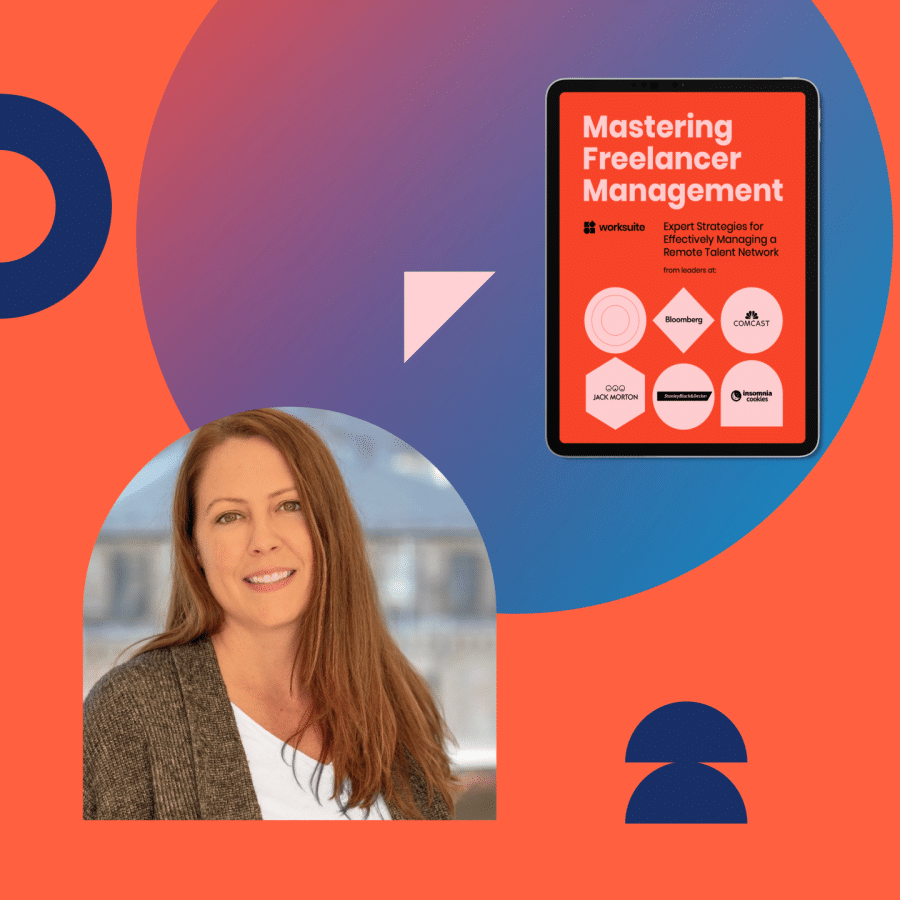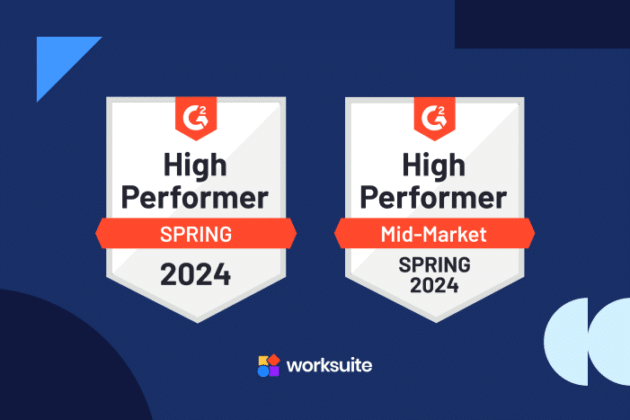
Managing Flex Teams & Global Creative Projects with Bloomberg's Kellie Jeswald


This in-depth interview is part of Worksuite’s ongoing series on Mastering Freelancer Management: Expert Strategies for Effectively Managing a Remote Talent Network. Download the full guide here, and subscribe to our YouTube channel to see the latest videos.
Kellie Jeswald
Global Lead, Project Management and Studio Operations
Bloomberg Media
Kellie has focused most of her 20-year career within creative project management and operations. Her experience spans across small boutique agencies to larger NYC advertising firms, she’s also spent time as a consultant helping stand up vendor support models for various in-house agencies. Currently, Kellie manages a global PM team within Bloomberg LP’s in-house agency focused on finding efficiencies and partnering with Bloomberg’s Studio, Events, and Marketing leadership to ensure the right people and workflows are in place based on the volume and type of work flowing through the Studio teams.
Thanks so much for joining us to talk about mastering freelancer management. I’d love to start with the easy stuff – about you. What do you love about your job when it comes to managing creative resources?
Throughout my career, I’ve really always focused on creative project management. ‘Project manager’ is such a broad term, but I’ve leaned in with creative teams – working in both small boutique firms and larger New York City agencies.
I moved on to Accenture where I was the vendor companies were engaging with to help get their work done. Fast-forward to today, I’m in-house at Bloomberg. I’ve done a lot within the creative space, and I just love being around creative people. The work we do is exciting and fun.
When you get to see all the hard work that you’ve helped bring to life – whether it’s in the subway as you’re headed to work, or online – it just makes it really fulfilling. Plus, it’s usually a very nice group of people to work with. You have very creative minds, which make the day-to-day fun.
If we’re speaking about the freelance contract worker, that was always a big part of every aspect of my career, especially now where I landed at Bloomberg, here I am the primary person who engages with these external vendors to help us with our volume concerns.
You mentioned project management vs. creative project management. Can you talk to me more about that? Are there any unique challenges that arise with managing that type of talent or that type of work?
Good question. Sometimes when you’re collaborating with the creative mind, it can be a bit harder to keep people focused on a deadline. So you have your “type A” project manager who needs something delivered by X time. And then you have your talent who may need to get their creative juices flowing.
While I always respect the process, sometimes the timeline only allows so much room for the creativity to flow. So it’s a bit of a catch-22. But again, the role that the project manager plays is to make sure the creative team feels like they have the time and space needed to do a good job.
So it’s fulfilling, but it can be difficult.
You should always be the ‘calm within the storm.’ You are on the front lines as the project manager.”
Understandable! What are some of your top tips for efficiently managing creative freelancers?
You should always be the “calm within the storm.” You are on the front lines as the project manager. You are working with the stakeholders, the people requesting the work, so you are a bit of a go-between. And so you might be the one receiving some of that pressure. However, what I’ve found to be most successful is if I can turn that into motivation on the other side. Anything from bringing them donuts in the morning to keep everyone’s energy high to hit these deadlines, to really rolling up your sleeves and working with them versus just directing them on what you need and when.
It becomes a true partnership, which is how to build great long-term relationships with talent.
What challenges have you run into with managing different types of workers (contractors, vendors, flex teams)?
Time zone differences, whether you’re full-time or contract, are always really tough for communication. At Bloomberg, we have Studio teams in New York, Singapore, Hong Kong, London, and São Paulo. Trying to get the teams to truly collaborate can be hard.
You can only do so many stand-ups and statuses. However, once a given team logs off, there’s still work happening with another team. Trying to keep everyone up-to-date is never easy across time zones. With full-time employees, it may be a little bit easier – only because the investment in the company is there.
But with the contract workers we’ve engaged – they’re hungry. They really want to stay online and prove their skills. So they also really put forth the effort when it comes to cross-collaborating – whether it’s across regions or even within our own four walls – they’re putting forth their best selves. Which is great.
Also, if you get to a point with a contract worker where maybe that person isn’t the right fit, there is a path forward if you need to bring in someone else who is better suited for the role at hand.
Can you share more about that talent matching process? How do you pick the right resources for the right projects, especially with such a global network?
Skill set is key. Again, if you think about the role of the project manager, it is to really know the strengths and weaknesses of everyone on the team.
For example, one person might be incredibly creative, but they’re a little bit slower at getting the work done. Someone else might be less creative, but they can cruise through multiple projects in a given day. It’s critical to understand those strengths, and how you need to work with each individual to keep them motivated. It may not always be that easy though, especially when there’s a high volume of requests coming through.
It’s really about ensuring you have the right people with the right skill sets picking up that work, so we don’t run into any delays or get backed up.
Skill set is key. Again, if you think about the role of the project manager, it is to really know the strengths and weaknesses of everyone on the team.”
What are some systems or frameworks you like to use when it comes to just managing that volume of workload?
We’re in the process of transitioning to a new project management tool, which I think is going to be really great for us. It’ll add more transparency and help us with some of the resource management issues – making sure everyone has a comfortable level of work. No one’s over- or under-allocated.
We’re also putting in a framework for prioritization as well – what I’m calling the “level of effort” scale.
This is a framework to determine how much effort should be applied to each project. Because not all projects have the same level of importance, we created this weighted system to help us identify where our time should be spent.
And so each campaign, or event, or project that comes through gets filtered through the system. And once we have a score, that number tells us things like:
- Should this be templated?
- Or does this require creative concepting?
- Or is it a mix in between?
I think that’s key, because we were a company that used to treat every project coming through as a top priority. Everything got all the bells and whistles. We went 115 percent on all the work, but it caused a lot of bottlenecks, and it really was starting to burn the team out.
Now, we actually have a system in place to determine, ‘Okay, this falls in this low category. It’s just a template. It’s a copy change. We’re not changing creative.’
Meanwhile, for these other projects, we want to make sure we have the time to do them right, because these are the higher priority initiatives requiring a higher level of effort.
That’s interesting. Do you have any advice around keeping talent engaged and motivated, even on the ‘lower priority’ work?
It’s ironic you say that, because the purpose for us not really calling it a priority conversation yet, but rather a “level of effort” conversation is because we don’t want people to think that all they’re working on is low-priority work.
It truly is a level of effort scale, and I think a lot of the teams appreciate that. They might be seeing a lot of things that hit that “lower effort” category. But honestly, these are the things we now look at to see if they can be self-serve. Can we use tools like Canva to just build out the templates, but have the requester customize it themselves?
This is also where we engage with a couple different agency vendor partners, to really help us knock out that low-effort, high-volume work. This way, our core team that we have here can really focus on those initiatives where their deep knowledge of the company and our brand helps them focus on those higher-level of effort projects. So we don’t say priority. All work is a priority. It’s just that the level of effort for each one can shift.
Just being someone who listens and understands your talent’s challenges, goes a long way. I would say the other half of my role is really operational, process, workflows – and that’s where the key insights come in.”
Zooming out, what do you feel is the most important aspect of managing creative resources?
Be open and listen. As a project manager, just being someone who listens and understands your talent’s challenges, goes a long way. I would say the other half of my role is really operational, process, workflows – and that’s where the key insights come in. I’ve learned, you have two types of people: certain people who will just suffer in silence, unless you prod and poke and ask for their input; and certain people who just tell you so much and you can’t ever really please them.
And so you must figure out that healthy mix between both of them. Because you do want to help them, if there’s an issue in the workflow, if things aren’t working, does what we’re asking them to do make sense? I think to be the project manager is to be the person who listens. The one who really helps facilitate.
I would never want people to feel like “what we say goes.” Rather, everyone has a voice in this conversation. And when you hear and take action on that feedback as it comes in, it makes the working relationship stronger, and people feel more confident and comfortable.
And that probably is true for everyone – not solely working with creatives. Again, being that calming force. A big part of that is listening and helping to improve things moving forward.
Love it. For global companies like yours who work in different locations and cultures, have you experienced any other challenges?
One of the things if we’re thinking specifically around creative, is consistency in the creative work.
For example, we could develop this grand campaign in New York, and we share that out thinking this is our “global campaign.” We share it with our teams in Hong Kong and London, and they react with, “Whoa you can’t say that!” or “Whoa you can’t use that color,” or any number of intricacies you may not think of when you’re only focused on your own region.
So one thing we’ve been trying to get better at is inclusion: Making sure, for example, if something is meant to be global and not solely focused in an individual region, how are we communicating that to our creative partners in those offices? Always making sure we’re doing and saying what would resonate just as well in those regions. We have definitely gotten better at that.
But when you’re talking about different groups and different time zones doing creative for the same company, again, we’re, the same company, the same client base – we’re an in-house agency. You need to make sure there is that consistency across the brand.
Another tool we are heavy users of is Slack. We have various forums where you drop creative in, you can collect instant feedback from the group within those channels, just to make sure what we’re doing really would make sense globally, and keep our brand voice consistent.
That’s really helped the team feel like they have a say in what we’re doing, which has really helped motivate our talent.”
I’d just love to learn more about the workflows that you recommend when it comes to managing creative work at scale…
We instituted what we’re calling the “studio engagement process,” which has been a game-changer for our team. Before – and honestly this is a problem for a lot of in-house agency environments – creative teams felt like order-takers.
“People are just telling me what they want, and I’m delivering on what they ask.” Maybe this process doesn’t make the most sense.
We manage our social channels. We manage our websites. We manage all of these ways to communicate with our clients. And some of the requests felt like they just didn’t make sense for what we were trying to accomplish.
So we scrapped our old way of working, and we created the studio engagement process. This process entails: a brief comes in, a strategist reviews it, then they work with our studio team internally, and we are the ones putting together the scope of work.
From a studio perspective, we are the channel owners. We do manage those audiences, so it’s important that we have someone who’s looking at that end-to-end customer journey with a global purview for those audiences we’re trying to reach.
And we have the strategy team coming in to support the people requesting the work to ensure we’re no longer order-takers. We’re actually part of the conversation proposing what will work for the request or problem from the brief. There is also a creative point of contact in those initial conversations so they are able to voice their opinion upfront.
Then, when we’re kicking off with the team, it’s more cohesive. Everyone understands the goal – what we’re trying to do. We’re crafting that brief and that strategy framework together, versus feeling like, “Here, just do it.”
That’s really helped the team feel like they have a say in what we’re doing, which has really helped motivate our talent.
Love that. One last question that I’m asking everybody. What does the future of work mean to you? What are you seeing that is going to be important for the future of workforce management?
I really love the idea of a flex team. I was part of a flex team earlier in my career, in which I was the vendor who was engaged to come into a company and help with their volume.
Work peaks and valleys. And you really can’t staff appropriately in an in-house agency environment, because you never know what might happen.
Having the capability and having the contacts and the vendors set up in the system “ready to go” really helps when you hit those bottlenecks of too much work volume – those moments when you feel, “There’s no way we’re going to get it all done.”
Conversely, with a flex team and system in place, you can have peace of mind and efficiently manage that volume. “Okay, there’s this whole group of people over here. We’ve already onboarded them to the brand. They’re fully capable and ready to work. We gave them access to our systems.”
And now they’re just an extension of our team, when we need it in the peak seasons. Or even, for example, when everyone takes vacation at the same time in August. It could be anything. Having that capability to really ease the minds of everyone, to know we have this flex team that we can pull from who can jump in in a pinch, and really deliver on the work – I think that has a lot of benefits. and I can see that being a huge part of our future moving forward.
Conversely, with a flex team and system in place, you can have peace of mind and efficiently manage those bottlenecks of work volume.”
Key Takeaways
- Be the “calm within the storm” as a creative project manager, supporting your talent and acting as a motivator and facilitator rather than just directing.
- Foster a collaborative environment by engaging freelancers as long-term partners rather than just task-doers.
- Utilize project management tools and proven frameworks for efficient resource allocation and workload prioritization.
- Implement structured request processes, like Bloomberg’s “studio engagement process,” to ensure alignment with project goals and avoid miscommunications.
- Embrace the concept of Flex Teams to efficiently address fluctuations in workload and avoid stressful overwhelm during peak periods.
- Engage external vendors, freelancers and agency partners to knock out the low-effort, high-volume work – to keep your internal team focused on strategy.
- Clearly communicate guidelines for global brand consistency, especially when managing talent in different international locations.







